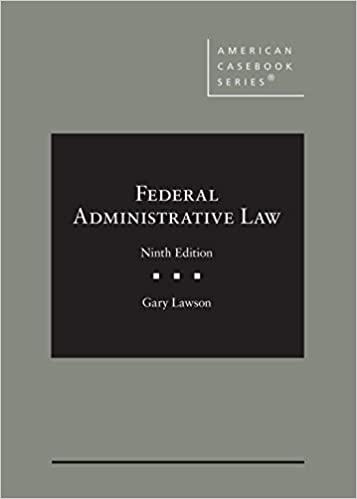Session 2 Assignment: We will learn how to "brief" a court opinion now. Look over Appendix "A" in the textbook, "How to Brief Cases and Analyze Case Problems". Also attached are a sample case from the New Jersey Supreme Court ("sample case") dating from 1918 along with a brief of the case ("sample brief"). The brief is in the so-called IRAC format (issue/ruling/analysis/conclusion). All lawyers and judges have been trained to write using this format. Whenever either the "rule" or "analysis" sections are either missing or insignificant, it tends to stand out like a black eye. The author uses the same basic format throughout the textbook to summarize court opinions. Please review both documents. The sample case, at one page, is fortunately quite short. By contrast, the U.S. Supreme Court majority opinion in the right to bear arms case, DC v. Heller (2007), was 64 pages long and had two dissenting opinions, one of which was 46 pages long and the other 44 pages. Count your blessings. After reviewing the examples, read the attached Pennsylvania Supreme Court opinion in Lindh v. Surman relating to who keeps engagement rings when the couple splits up before a marriage. You can skip the dissenting opinions but they're interesting. Brief Justice Newman's majority opinion. Sample Case.docx 1 Sample Brief IRAC.docx + Lindh v Surman.pdf +Session 2 Assignment: We will learn how to "brief" a court opinion now. Look over Appendix "A" in the textbook, "How to Brief Cases and Analyze Case Problems". Also attached are a sample case from the New Jersey Supreme Court ("sample case") dating from 1918 along with a brief of the case ("sample brief"). The brief is in the so-called IRAC format (issue/ruling/analysis/conclusion). All lawyers and judges have been trained to write using this ect format. Whenever either the "rule" or "analysis" sections are either missing or insignificant, it tends to stand out like a black eye. The author uses the same basic format throughout the textbook to summarize court opinions. Please review both documents. The sample case, at one page, is fortunately quite short. By contrast, the U.S. Supreme Court majority opinion in the right to bear Converter arms case, DC v. Heller (2007), was 64 pages long and had two dissenting opinions, one of which was 46 pages long and the other 44 pages. Count your blessings. llery After reviewing the examples, read the attached Pennsylvania Supreme Court opinion in Lindh v. Surman relating to who keeps engagement rings when the couple splits up before a marriage. You can skip the dissenting opinions but they're interesting. Brief Justice Newman's majority opinion. m Sample Case.docx + Sample Brief IRAC.docx + Lindh v Surman.pdf +








